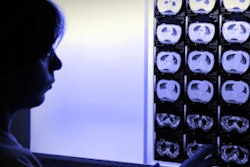
Is interventional radiology (IR) a "boys' club" dominated by men? That's the suggestion of a new survey that found women make up a small minority of interventional radiologists and often experience various types of harassment, according to a paper in the October issue of the American Journal of Roentgenology.
Almost half of female interventional radiologists experience workplace sexual harassment, and 22% report having experienced it during training, wrote co-authors Dr. Meridith Englander of Albany Medical Center in Albany, NY, and Dr. Susan O'Horo of Boston Medical Center. The findings are a sobering reminder that even though more women are choosing to become interventional radiologists, they continue to face barriers their male peers do not.
"Although historically fewer than 10% of interventional radiologists have been women, they represent 26% of all medical students currently matching into the integrated IR residency. ... Clearly, IR is a career that can attract women," they wrote. "But is it a career that promotes and supports its women? Will the women entering IR training be discouraged by the environment or challenges?"
Current media coverage of the Women's March and the #MeToo movement has prompted a nationwide conversation about sexual harassment, pay inequity, and gender discrimination. Englander and O'Horo surveyed female interventional radiologists to explore these issues in the field (AJR, October 2018, Vol. 211:4, pp. 724-729).
They posted a 62-question survey on the Women in Interventional Radiology page of SIR Connect, an online, members-only forum of the Society of Interventional Radiology (SIR). Questions addressed participant demographics, marital and parental status, training experiences, relationships with coworkers and patients, and career achievements and goals.
Ninety-nine women completed the survey; most were full-time interventional radiologists or practiced a combination of IR and diagnostic radiology (two participants were nurse practitioners and eight were medical students). Results included the following:
- 47% of survey participants reported having experienced sexual harassment in their practice.
- 22% said they had experienced sexual harassment during their IR training.
- Only 18% of women who experienced workplace sexual harassment reported those experiences.
- 19% of survey respondents had been discouraged from pursuing a career in radiology.
- 43% had been discouraged from interventional radiology in particular.
- 50% of practicing interventional radiologists reported experiencing gender discrimination.
- 91% reported having been mistaken for a nurse rather than acknowledged as the attending physician.
It's clear that interventional radiology is currently a male-dominated specialty and women are not considered to be leaders or clinical experts in the field, Englander and O'Horo noted. Sexual harassment in the workplace is just one of many challenges the specialty must address to change its culture, they wrote.
"How can we change the culture of IR from a boys' club and ensure the end of sexual harassment and gender bias?" they asked.
Steps include bringing women into the decision-making process, addressing assumptions, recommending women for and asking them about opportunities, and offering clear policies about parental leave, according to the authors.
"Women are committed to and passionate about IR," they wrote. "IR needs women to succeed so that the field can continue to thrive."




















